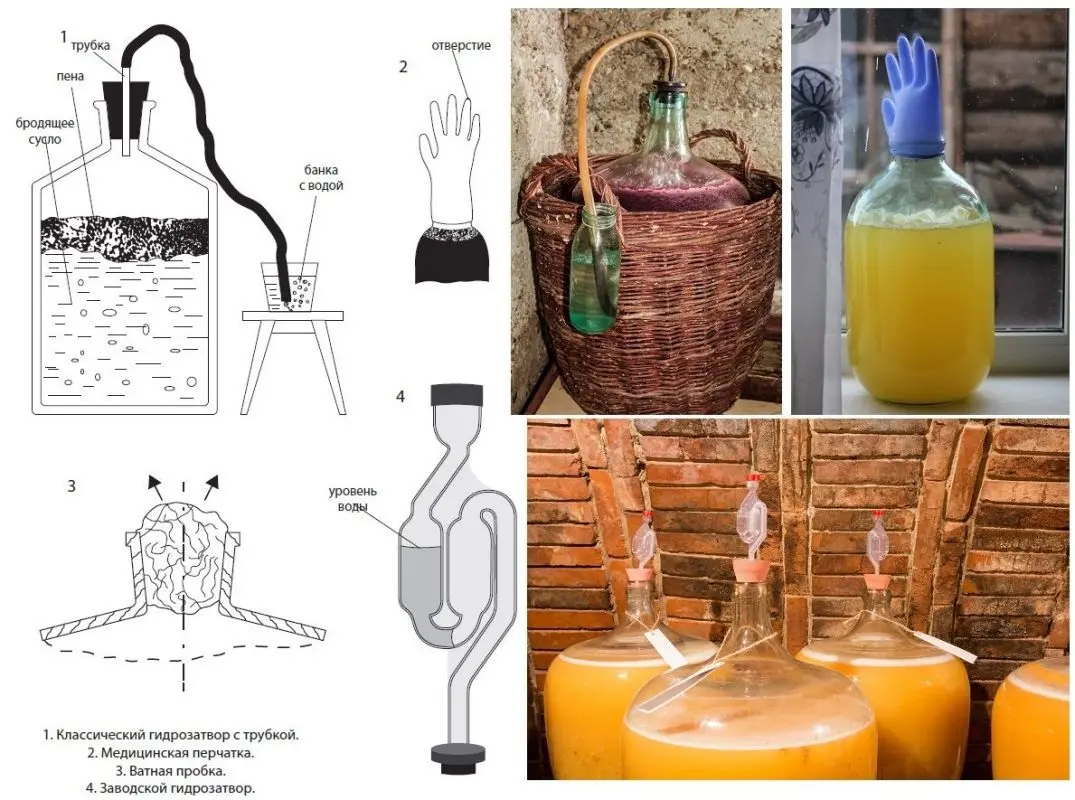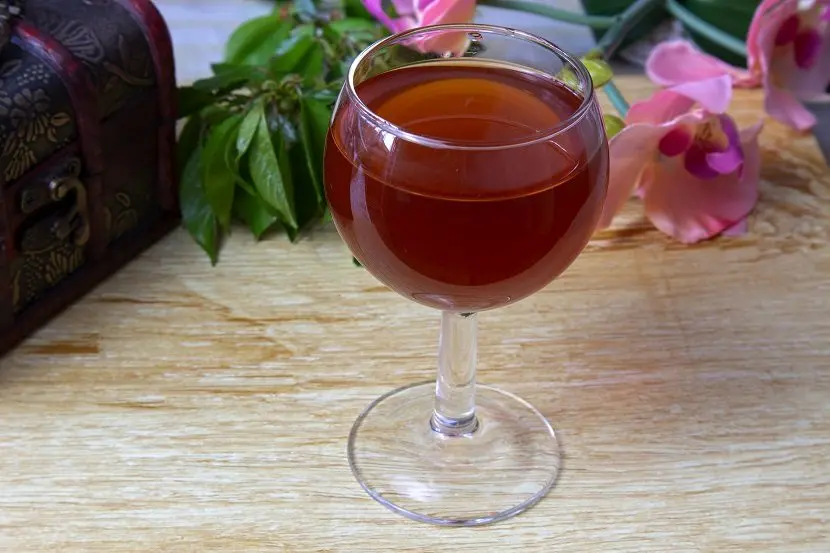Homemade barberry wine turns out bright red, fragrant with light moderate sourness. To achieve a positive result, you will need a lot of water and sugar, since the berry itself is very acidic. But the result is worth the effort.
For the preparation of barberry wine, ripe fresh or frozen berries are used (thaw beforehand). First, the fruits are sorted out, rejecting rotten and with traces of spoilage or mold. Hitting even one such berry can spoil the entire batch of wine. To prevent mold, wash the containers well with boiling water (sterilize), then wipe dry.
Ingredients:
- barberry berries – 3 kg;
- water – 12 liters;
- sugar – 2 kg;
- raisins (fresh grapes) – 100 grams (or wine yeast).
barberry wine recipe
1. 3-5 days before processing the berries, prepare the starter. To do this, put unwashed (so as not to remove wild yeast from the surface) raisins or crushed grapes in a jar, add 50 ml of water and 10 grams of sugar, mix. Cover the jar with gauze, put in a dark place at room temperature. When foam and hiss appear, the sourdough is ready.
2. Pass the barberry berries through a meat grinder or crush in another way.
3. Transfer the resulting berry mass to a non-metallic container with a wide neck (enamelled pan, plastic bucket, etc.).
4. Add 1 kg of sugar, water and sourdough. Mix.
5. Cover the container with gauze, then transfer to a dark place at room temperature. Leave for 2-3 days. Stir with a clean hand or wooden stick every 12 hours. Signs of fermentation should appear on the surface of the must: foam, hiss, a slight smell of sour.
6. Strain the wort through cheesecloth, squeeze the pulp well. The squeezed berry mass is no longer needed.
7. Pour the juice into a fermentation tank (fill no more than 75% of the volume), add 0,5 kg of sugar, mix.
8. Install a water seal on the neck of the container (medical glove with a small hole in the finger). Check the tightness of the structure.

9. Put the wort to ferment in a dark place (you can cover the container) with a temperature of 18-26°C.
10. After 5 days, add the remaining sugar (0,5 kg). To do this, pour 0,5 liters of wort through a tube, dilute sugar in it, pour the resulting syrup back. Install the water seal again.
11. Depending on the temperature and the quality of the yeast, fermentation lasts 30-55 days. Then the water seal stops releasing gas (the glove deflates), a layer of sediment appears at the bottom, and the wine becomes lighter.
If after 55 days the fermentation has not ended, the wine must be drained from the sediment and again put under a water lock, otherwise bitterness may appear.
12. After the end of fermentation, drain the young barberry wine through a straw into another container, without touching the sediment at the bottom.
13. Try, if desired, add sugar to taste (no more than 150 grams per liter). If the strength is too low, you can pour in vodka (alcohol 40%) up to 10-15% of the volume. Fastening promotes storage.
14. Close the container hermetically (preferably filled with wine to the top). If sugar was added at the previous stage, you can hold it under a water seal or a glove for another 10-12 days, then close it.
15. Transfer the wine for aging to a refrigerator or cellar (dark room with a temperature of 8-16°C). Leave to ripen for 4-6 months.
16. As sediment appears (every 2-3 weeks then less often), pour the wine through a straw into another container.
17. Pour the aged barberry wine into bottles (other containers) for storage, seal tightly with stoppers. The shelf life in the refrigerator or cellar is 3-4 years. Fortress (without the addition of alcohol) – 8-12%.










